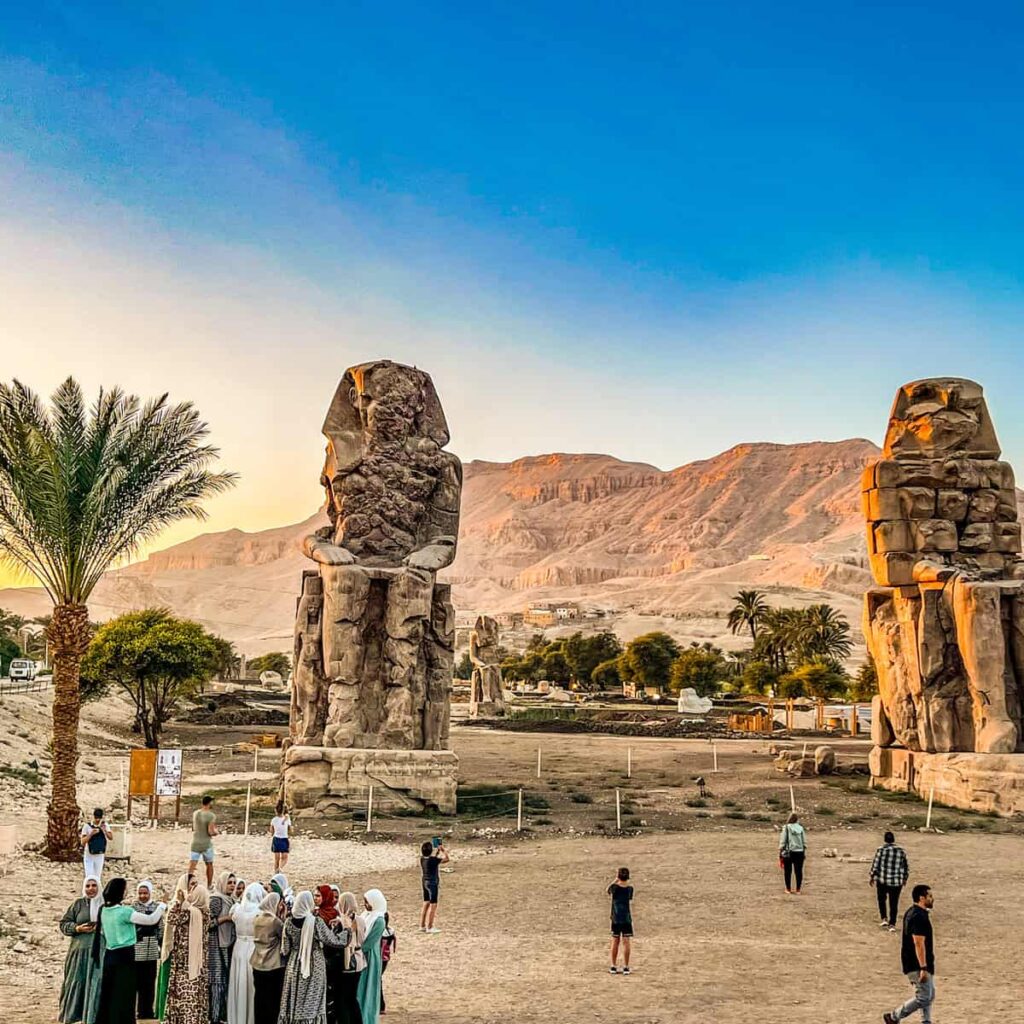
Welcome to Luxor — often called the world’s greatest open‑air museum. Nestled along the Nile in Upper Egypt, this ancient city was the heart of pharaonic power and is today a must‑visit destination for anyone intrigued by human history, monumental architecture, and timeless landscapes.
📍 Location & Overview
Luxor sits on the banks of the Nile River, in southern Egypt — historically the site of the ancient city of Thebes.
It’s divided by the Nile into two main zones: the East Bank (where the living, temple city lay) and the West Bank (the land of the dead) with its necropolises of pharaohs and nobles.
As per official tourism materials, Luxor is “the storehouse of ancient Egyptian civilisation” with more than 800 archaeological sites.
🌟 Why Luxor Is Exceptional
🏛 Ancient Monuments Everywhere
Luxor is not just one‑site tourism — it offers a whole cityscape of monumental antiquity:
The massive Karnak Temple complex on the East Bank — one of the largest religious complexes ever built.
The impressive Luxor Temple sitting in the heart of the modern town.
The awe‑inspiring Valley of the Kings on the West Bank — royal tombs of the New Kingdom pharaohs.
🏞 Landscape & Atmosphere
The contrast of the shimmering Nile, desert hills, ancient ruins and modern town gives a unique travel experience.
Wide‑open skies, bright sun, and desert climate give the place a dramatic feel.
🎯 Cultural & Tourism Significance
Tourism is a major pillar of Luxor’s economy — the city consistently attracts cultural and heritage travellers.
According to news, tourism in Luxor (and neighbouring Aswan) increased by 22 % in Q1 of 2023, showing it remains a highly relevant destination.
🧭 Top Things to Do
Visit the Karnak Temple and walk among towering columns in the Hypostyle Hall.
Witness the sunset at Luxor Temple or enjoy the play of light on ancient stone.
Explore the royal tombs in the Valley of the Kings — including the tomb of Tutankhamun (if open).
Take a felucca (traditional sail boat) ride on the Nile at dawn or dusk.
Optional: a hot‑air balloon ride over the West Bank for panoramic aerial views (check current safety & availability).
Wander through the older markets and try local food and crafts — part of the living city, not just the ruins.
🛠 Practical Information & Travel Tips
Best Time to Visit: Winters (October to April) are more comfortable; summers can exceed 40 °C.
Getting There: Luxor has an international airport and is accessible by train or Nile cruise.
Stay Options: A range from luxury hotels to budget guesthouses; staying on the East Bank gives easy access to main sites.
Local Etiquette: Respect local customs — dress modestly in non‑resort areas, especially when visiting religious or rural spots.
Guide & Tours: Because of the richness of the sites and layers of history, having a qualified guide can enhance your experience significantly.
Be Prepared for Some Tourism Hustle: Some travellers note bargaining, vendors, and tour‑traffic can be a bit intense. For example:
“It really is best to go with a company or a local who doesn’t mind dealing with this.”
✅ Why Visit Luxor?
For anyone interested in ancient Egypt, this is perhaps the most condensed, accessible place to experience it.
The monuments are immense, well preserved, and densely packed — giving a deeply immersive historical journey.
Combine heritage with modern comforts: you can stay in a good hotel, eat well, and still step straight into pharaonic history.
Great for photography enthusiasts, history buffs, and those seeking meaningful travel.
